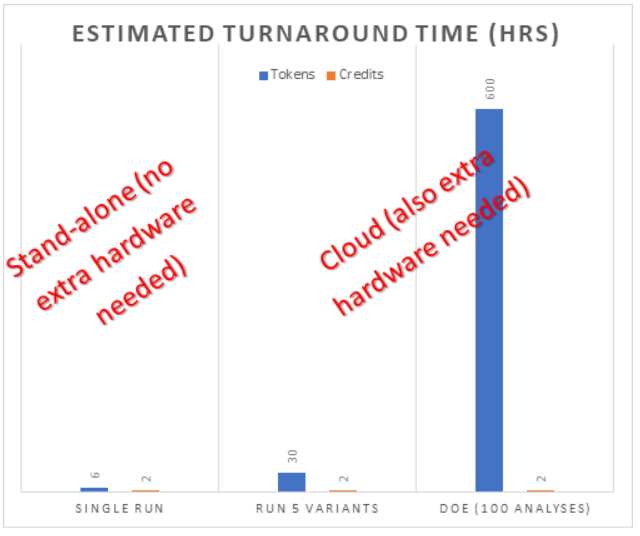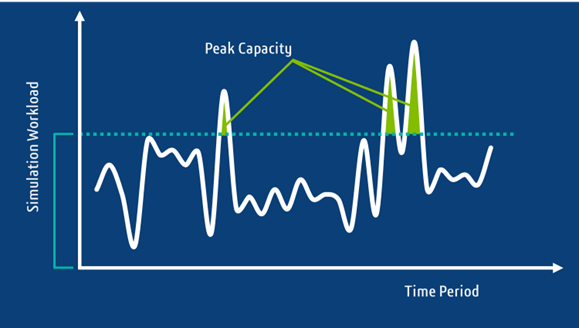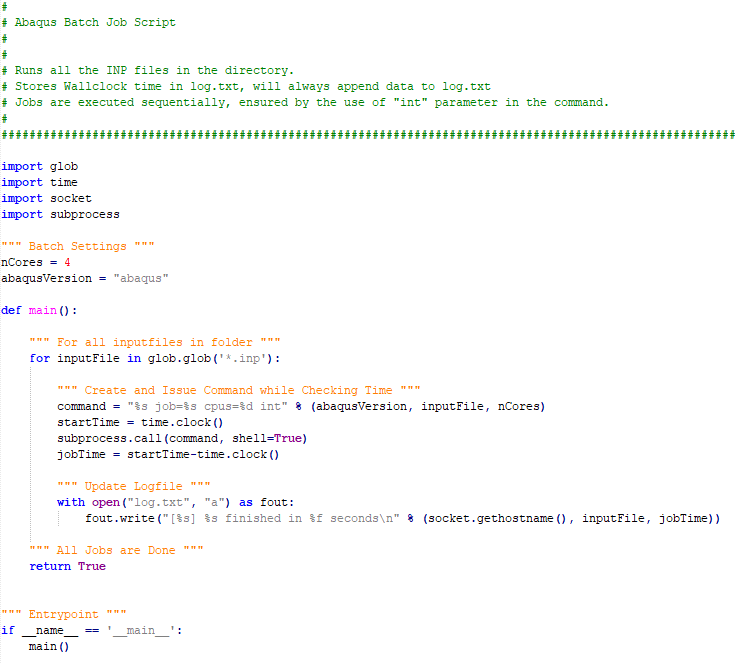Up until the last few years, Abaqus ran exclusively as a standalone product licensed with tokens (analysis, portfolio or extended). The number of tokens required is dependent on the task you need to perform, and the number of cores you require to solve it.
These token licenses are usually leased for a year (but quarterly licenses are available). With this licensing scheme, tokens are used most effectively if there’s a constant simulation load throughout the year.
So, what happens if there is a sudden need for additional solving capacity over a brief time period? Adding tokens for a year (or 3 months) might not be the best option any more.

Nowadays, Dassault Systèmes offers credits as an additional option to the token system.
Credits are used to pay for an hourly rate on analysis. This rate depends on the number of cores you run the analysis on.
Credits are available for both on-premise and cloud. Cloud credits provide extra solving capacity, and hardware capacity in the 3DEXPERIENCE cloud platform, while on-premise credits provide a slightly lower hourly rate.
Burn rate credits/hour
| Number of Cores |
On-premise credits (SUN) |
Cloud credits (SUN-OC) |
| 1 |
11.13 |
4 cores is minimum |
| 2 |
11.13 |
4 cores is minimum |
| 4 |
18.55 |
19.11 |
| 8 |
25.97 |
27.09 |
| 18 |
34.65 |
37.17 |
| 36 |
42.07 |
47.11 |
| 144 |
56.91 |
77.07 |
In order to run analysis on the cloud, additional named user licenses are needed for access to the platform as well as to the simulation manager, which is used to execute the analyses.
So, when would you need on-premise credits and when would you need cloud credits?
On-premise Credits
Let’s assume you have a local HW (4 cores) and 5 tokens in your company, and the analysis you need to run usually takes 6 hours to run on 1 core which is what you can do by having 5 tokens. However, at this time the Abaqus tokens are already checked out by another user, and you can’t queue your analysis due to a deadline.
Having on-premise credits available would then enable you to start the analysis locally without having to wait for the other analysis to finish. Using all 4 cores will probably not only complete your analysis quicker, but it will also make the total cost (credits consumed) lower since the time-scaling when using multiple cores is usually better than the increased rate. But this, of course, depends on how well your type of analysis scales.
Cloud Credits
If you have 5 model variants to run with the tokens and HW available this would take 30 hours since the analyses must be carried out in sequence due to lack of HW and tokens. In this case, it might be beneficial to use the cloud credits and run the analyses in parallel on the cloud. Then the total time to complete all 5 analyses would still be 2 hours.
Now, let’s assume you need to perform a DOE with 100 variants. This would take close to 30 days on local HW and tokens. Even adding extra tokens to use all cores available would mean a turnaround time of approximately one week – depending on how well the analysis scales.
The main benefit of cloud credits is that you have access to unlimited HW and can run all 100 analyses in parallel at no extra cost compared to run the analyses in sequence.

In Our Experience...
If you have a high utilization rate on your tokens, credits are more expensive. But, if you only use your tokens for solving a few hours per day, credits are a better, cheaper solution.
In most cases, having a mix of tokens and credits will provide the best cost mediation. This approach also helps you to be flexible and efficient when there are peak loads to be handled.
For more information watch the 'Cloud Computing for Abaqus Simulation Credits Pay Per Use with the 3DEXPERIENCE Platform' Webinar.







